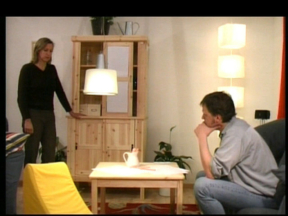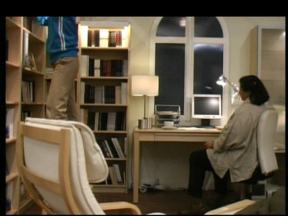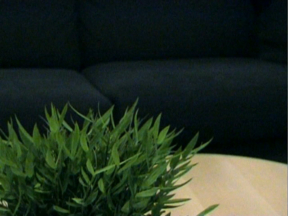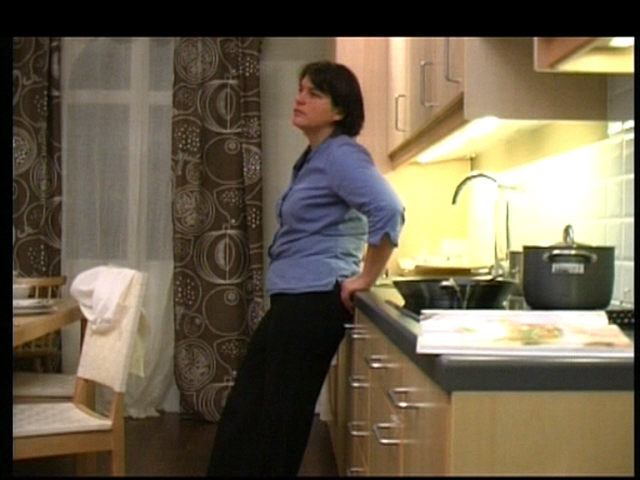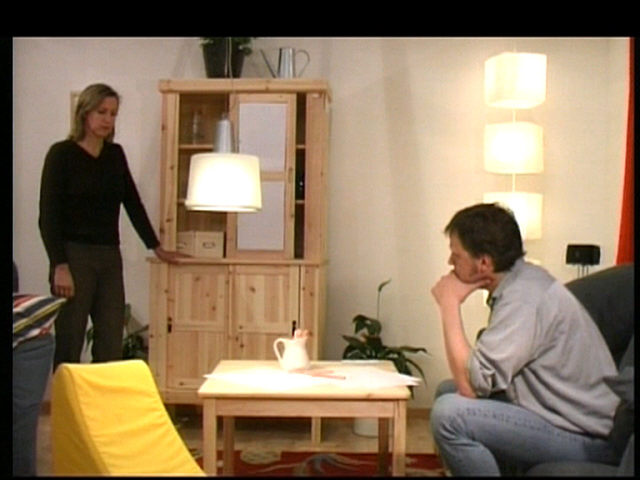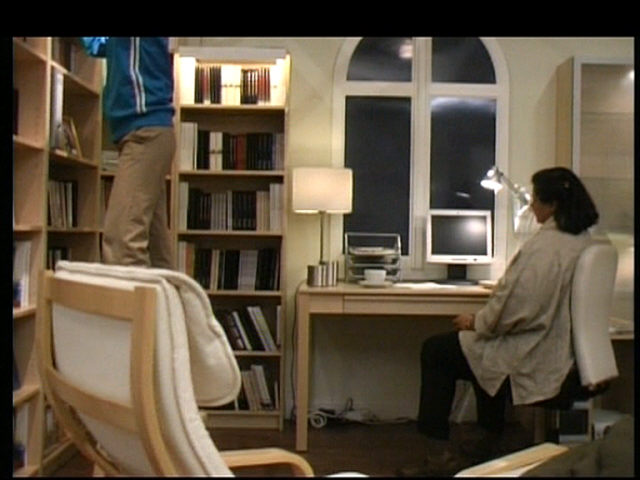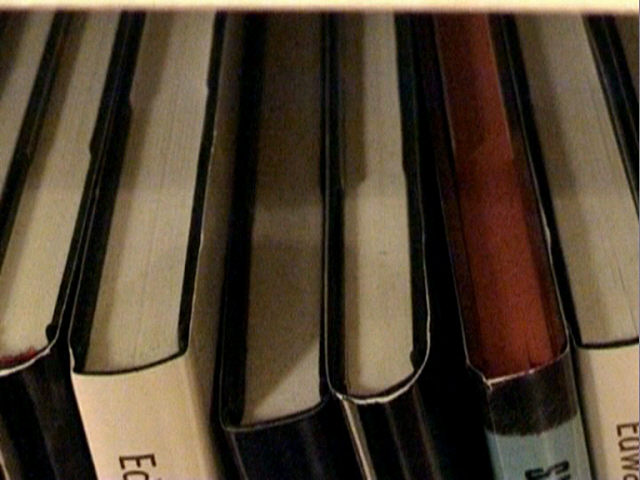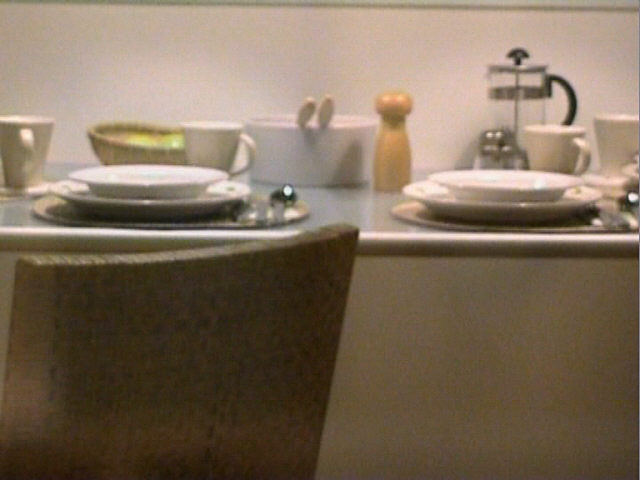
- 2002
- Television, DVD video, DVD video and DVD video
- A definir
- Inv. IM19
Filipa César
Product Displacement
In Product Displacement Filipa César questions daily contemporary life in an ordinary yet private and internal space: the house. The installation is composed of a diptych, showing several people in different spaces of the house (left screen) and illusory close-ups of what these people see (right screen).The characters of the film are stylized and made abstract by their constant reappearance and stillness and by their lack of communication. They are transformed into products that are permanently being displaced. The virtuality of the characters is paralleled and emphasized by the configuration of the house, shown through a looped travelling shot that opens an impossible, never-ending spiral of time and space further displacing the character-objects shown.
There is a complex tension between static and dynamic elements in both screens. The close-up relates to a moment of halt, where movement is paused or slowed down, and may then be used as a reading thread for the motionless objects being displayed. But the progressive blurring within each different close-up clashes with this stillness, further challenged by the cross-fade, used to unite the different images in a slow yet relentless movement. The characters appearing on the left screen are static, with the exception of small and almost invisible micro-movements (e.g. the blink of an eye), and yet the camera that records that stillness is in motion (the travelling shot).
The simultaneous vision of both screens enhances these tensions: the decoding of the close-ups as the subjective view of the different characters contaminates their static positions with a possible movement still to come. This reconstitution of a personal, psychological image of the persons portrayed is a mechanism shared with a photographic work of the same period: Monologues (2002). The diptych may also be read as a mirror-like device whereby people and objects both become product-characters and mimic each other’s movements.
The viewer is invited to appropriate the work and re-create its open set of meanings and (re)presentations. The tensions mentioned above, as well as the call for interaction with the work, are underlined by its muteness. The silence of the work not only mirrors the lack of communication between the characters of the film but also, and more importantly, incorporates the viewer in the film by using the sounds of the room in which the work is presented as its soundtrack (some produced by the viewer him/herself). Thus it further enhances not only the film’s dynamic structure, and therefore its tensions, but also the reflection it contains and requires.
JL
January 2011
| Type | Value | Unit | Section |
| Height | 0 | cm |
| Type | Acquisition |
| 50 Anos de Arte Portuguesa |
| Lisboa, Fundação Calouste Gulbenkian, 2007 |
| ISBN:978-972-678-043-4 |
| Catálogo de exposição |
| 50 Anos de Arte Portuguesa |
| Fundação Calouste Gulbenkian |
| Curator: Fundação Calouste Gulbenkian |
| 6 de Junho de 2007 a 9 de Setembro de 2007 Sede da FCG, Piso 0 e 01 |
| Exposição programada pelo Serviço de Belas-Artes e pelo Centro de Arte Moderna, da Fundação Calouste Gulbenkian.Comissariado: Raquel Henriques da Silva, Ana Ruivo e Ana Filipa Candeias |

